Do Digital Effects and Tube Amps Get Along?
Does having a digital device in your signal chain downgrade the "organic-ness" of your sound?
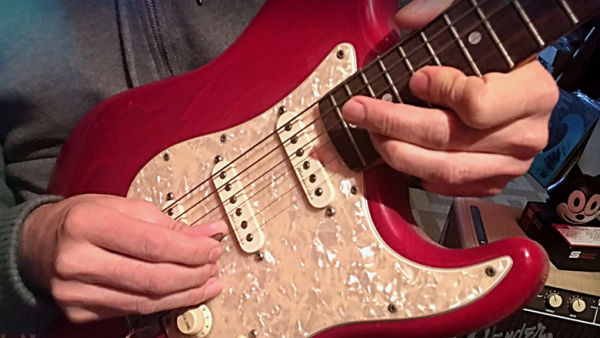
Do digital effects and tube amps get along? The stigma associated with digitized guitar pedals—and the processors thereof—would say they don't. In some cases, that may be true. Yes, the question is: Does having a digital device in your signal chain—particularly before your amplifier—downgrade the tone or the "organic-ness" of your sound?
Answering this question is difficult because it's highly situational and depends on a long list of variables that can change from rig to rig.
To attempt an answer, we’ll dig through the following ideas:
· The reliability of tube-driven tone
· The differences between analog and digital effects
· The differences between good and bad digital effects
· The optimal way to pair digital pedals and tube amplification
In this situation, the tube amp is our priority. We want to preserve its tone and to make the digital processors work around it instead of covering it up. The best tube amps feature an analog tone and then use the digital processors to compliment that tone.
Tube Amplification Seldom Requires Supplement
While there can be debate between digital and analog effects (which one is better in certain situations), it should be clear that the tone of a tube amp is almost always superior to that of a solid-state circuit. Therefore, a tube amp needs far less modding and effects layering. In fact, many solid-state amps are designed to sound like popular tube or valve amplifiers. For example, check out the IK Multimedia software packages:
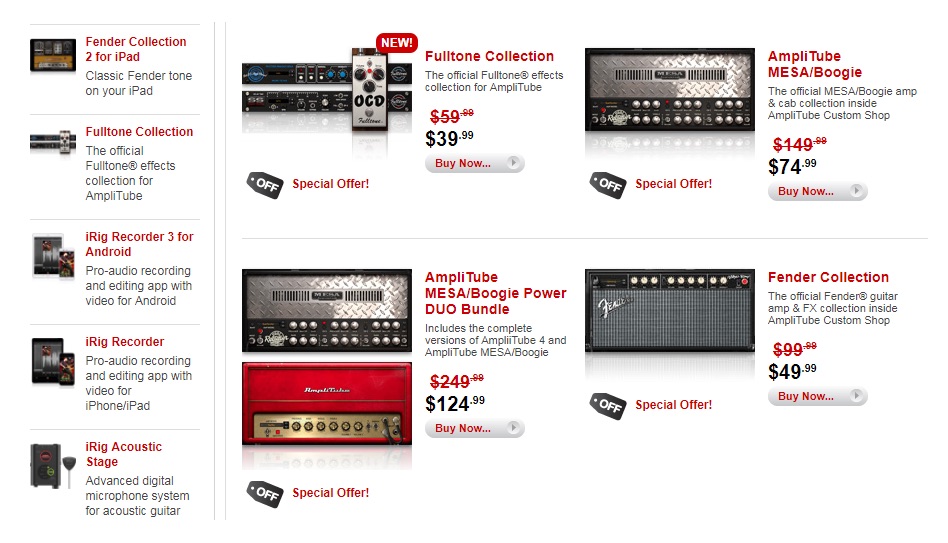
Note the Fender and Mesa Boogie amps. Those are digital models made to replicate the tone of popular tube amps.
In other words, tube amps are usually reliable on their own. They rarely need supplemented or tweaked to sound like something else. They are the source of almost all popular guitar tones of our time and of years gone by.
Understanding this is important if and when you go about layering them with any kind of effect - especially digital ones.
You should also make a proper distinction between effects and amp modeling.
Amp Modeling Over Tube Amps is a No-Go
Using any digital amp model - like the ones you see in above multi-effects pedals - over the natural tone of a tube amp is almost always a bad idea. Your goal is to compliment what's already there, not to cover it up with an artificial version of something else.
Consider the following screenshot from the DigiTech RP500 owner's manual. These settings are all just amp models:
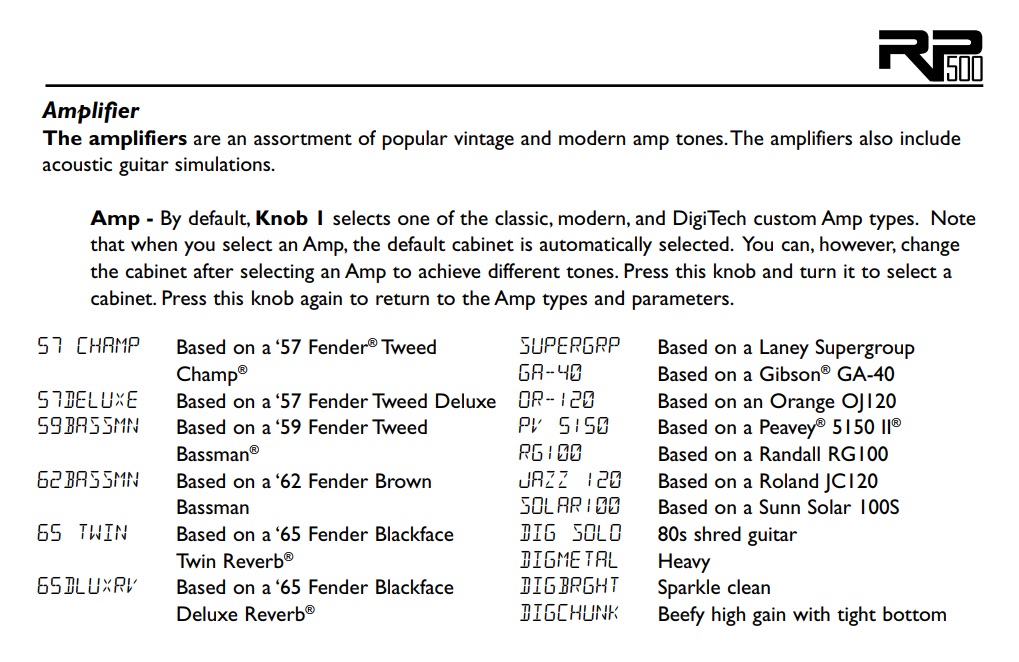
This is great if you just want to tinker with a bunch of different sounds. It's bad if you already have a Fender '65 Twin Reverb. Avoid plastering these kinds of digital effects or "models" over your physical tube amp circuit.
Up to the Task of Both Clean and Distortion Tones
Another thing to consider:
Most tube amps won't need a distortion pedal, digital or otherwise. When an amp has both a dirty (gain) and a clean channel, this allows you to dial your distorted tones along with whatever clean sound you might want to use.
This is why it's helpful to have amps with multiple channels and a channel switcher. Take the Mesa Boogie Dual Rectifier for example:
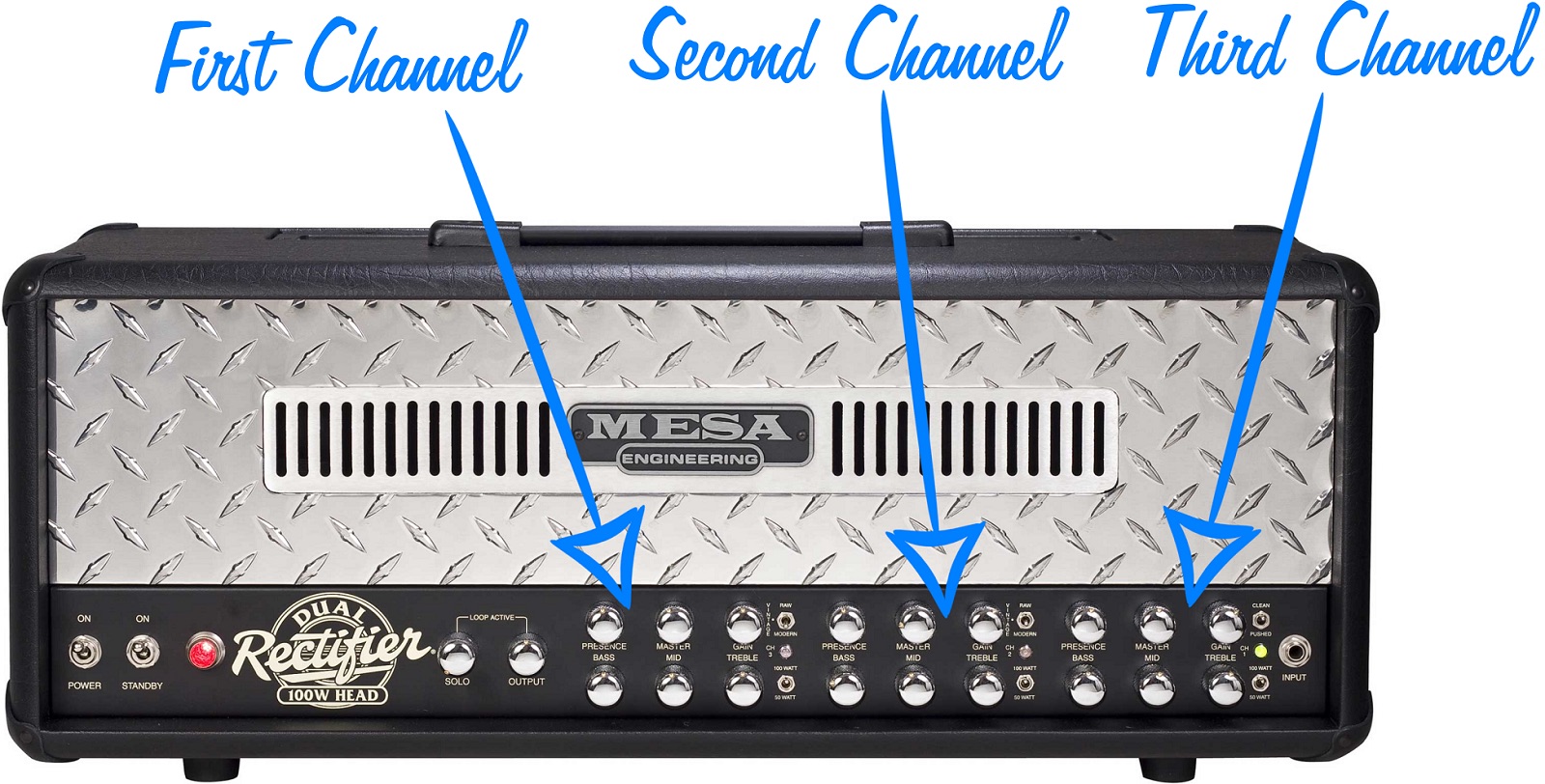
The Mesa Dual Rectifier has three different channels that essentially do the work of three effects pedals. Typically, you would set these channels to the following responsibilities:
1. Clean signal (basic three-band EQ and presence control)
2. Light distortion
3. Heavy distortion
With a tube amp, the more responsibility you can delegate to the amp itself, the better it will sound. That will save you some money and give you a better tone than you would get from a third party stompbox, especially when it concerns distortion or overdrive.
The dirty channel of a good tube amp is almost always preferable to what you'll get out of a digital distortion pedal.
But what about delay, chorus and other effects that you can't get directly from a tube amp? This is where digital pedals can - in some scenarios - be a helpful pairing with a tube amp. The responsibilities of your guitar rig could be delegated like this:
· Clean base signal: Tube Amp
· Overdriven tone: Tube Amp
· Distorted tone: Tube amp
· Modulation: Digital pedals
· Delay: Analog pedals
· Compression: Digital rack processor
That's just a hypothetical example, but it illustrates how a tube-driven rig might find a happy marriage with digital elements. It's about playing to the strengths of each device. To develop these best practices a little more clearly, we need to talk more about the pedals themselves.
Let's start with the difference between analog and digital effects.
The Difference Between Analog and Digital Effects
The difference between digital and analog pedals is dependent on the type of effect you're talking about. For example, an analog delay pedal uses a bucket brigade circuit to create echo sounds. The process looks like a line of people passing a bucket of water (hence the name):

In a digital delay pedal, this process is replicated by a digital processor, meaning the above circuit does not exist inside the actual stompbox. For example, the PT2399 is a digital echo processor that you might find in a cheaper digital delay pedal. Notice it looks nothing like the analog bucket brigade circuit.
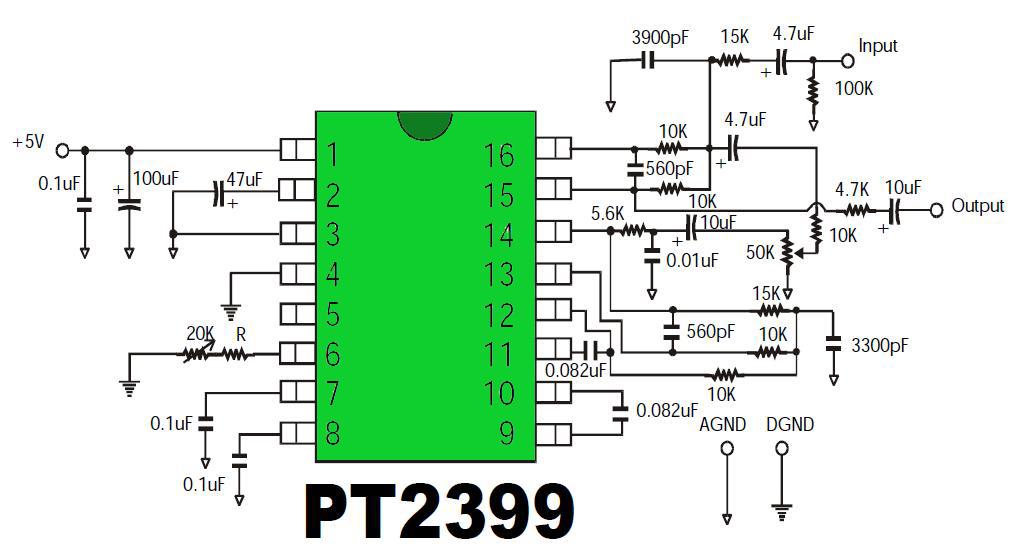
Digital processing chips are often viewed as a less authentic form of a given effect since analog circuits were originally designed and used long before DSPs even showed up. In other analog effects (phasers, chorus, distortion, etc.) the circuit designs vary but are always physical without any digital component. Broadly speaking, an analog pedal will often sound better (and cost more) than its digital counterpart.
Not All Digital Pedals Are Bad
This also does not mean that all digital pedals are bad or low quality. It doesn't even mean they all can't work well with tube amplifiers. Remember, as long as we let the tube amp do its job and don't get in its way, a digital layer doesn't have to detract from the pureness of the tube's tone.
For example, the following stompboxes are digital, but enjoy a fantastic reputation:
· Boss DD Delay Series
· DigiTech Whammy Series
· TC Electronic Hall of Fame Reverb
You should also consider that the simpler the effect (digital or not) the better off you'll be. For example, the Boss DD series deals only with delay. When you get into more complex digital and multi-effects pedals, it gets harder to predict the quality of each effect or the impact it will have on your tone. Typically speaking, as the roles of a pedal increase, the quality of its delivery on each task will decrease.
For example, when you look at Tom Morello's pedalboard, he has clearly employed some digital pedals but also taken a less-is-more approach to each stompbox. His amplifier, a tube-driven Marshall JCM 800, is preceded by four digital pedals (the MXR Phase 90 is analog - I believe) that each handle a single effect.
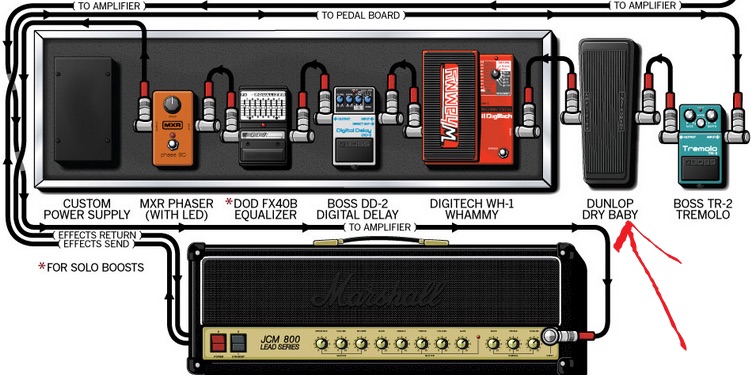
Again, keep in mind I'm generalizing and all digital stompboxes will behave differently, depending on several factors. Still, I think we can establish some conventional wisdom for tube amp users:
1. Staying away from distortion pedals is a good idea.
2. Though digital, Boss pedals are extremely reliable.
3. Digital pedals should be used as standalone effects, in a singular role (one for delay, one for chorus, etc.). In other words- keep it all separate.
4. A pedal's reputation precedes it. The reputation of a pedal is often reliable, regardless of whether it's digital or analog.
Yes, Analog Pedals are Better Options
This brings me to my final point:
Analog pedals are usually better-quality options. They're typically made by hand, sound nicer and are often housed in a true bypass circuit. At the same time, it's important to balance this reality with the following:
1. There are plenty of great digital pedals that work well in front of a tube amp
2. Single-job stompboxes are preferable, whether you're talking digital or analog
3. Light effects layering is a better job for digital pedals than heavy modding or saturation of your signal
4. Avoiding amp modelers, multi-effects pedals and distortion pedals will generally mean you don't have to worry about losing tube tone.
Less is More: Cliche, But Very True with Tube Amps
Tube amps do the tone-related heavy lifting for you. And though cliché, it's true that less is more when it comes to analog guitar amplification. You don't need to add much to it. If you do, you can follow some simple best practices to be certain your amp’s tone is still being showcased.
Your amplifier is arguably the most valuable tool you have when it comes to crafting tone (especially if you have a tube amp). Whether you're adding digital or analog effects, make sure those effects are taking a back seat to sounds the amp is producing naturally, on its own.
Your Questions and Ideas
Do you run digital pedals through a tube amp? How do you divide analog and digital responsibilities in your guitar rig?
Share your story and your questions in the comments section below.
I prefer that to email, because it's much easier to answer the comments section, and it adds more content to the piece for those who might read in the future and benefit from the dialogue there.
Get The Pick Newsletter
All the latest guitar news, interviews, lessons, reviews, deals and more, direct to your inbox!
Bobby is the founder of Guitar Chalk, and responsible for developing most of its content. He has worked with leading guitar industry companies including Sweetwater, Ultimate Guitar, Seymour Duncan, PRS, and many others.
"I never use my tube amp at home now, because I have a Spark Live": 5 reasons you should be picking up the Positive Grid Spark Live in the massive Guitar Month sale
“Our goal is to stay at the forefront of amplification innovation”: How Seymour Duncan set out to create the ultimate bass amp solution by pushing its PowerStage lineup to greater heights
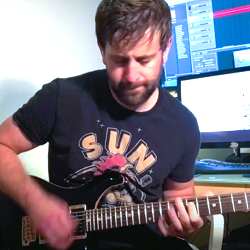








![Joe Bonamassa [left] wears a deep blue suit and polka-dotted shirt and plays his green refin Strat; the late Irish blues legend Rory Gallagher [right] screams and inflicts some punishment on his heavily worn number one Stratocaster.](https://cdn.mos.cms.futurecdn.net/cw28h7UBcTVfTLs7p7eiLe.jpg)

